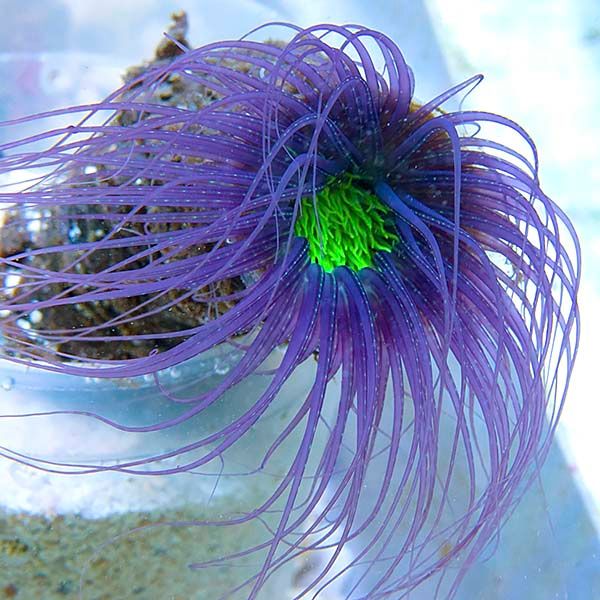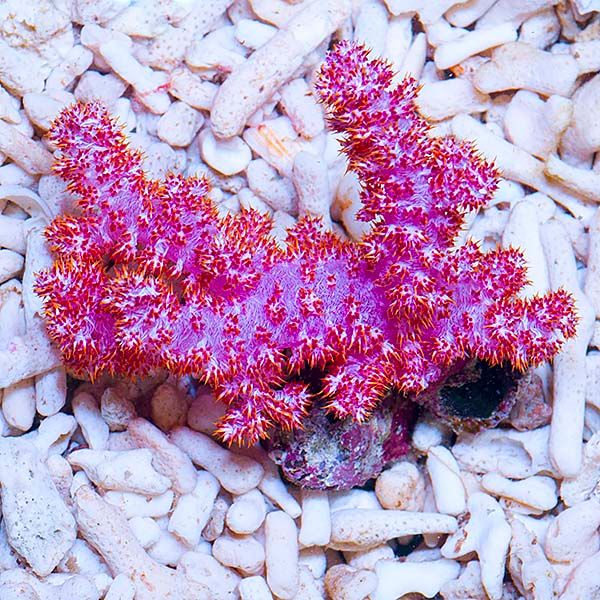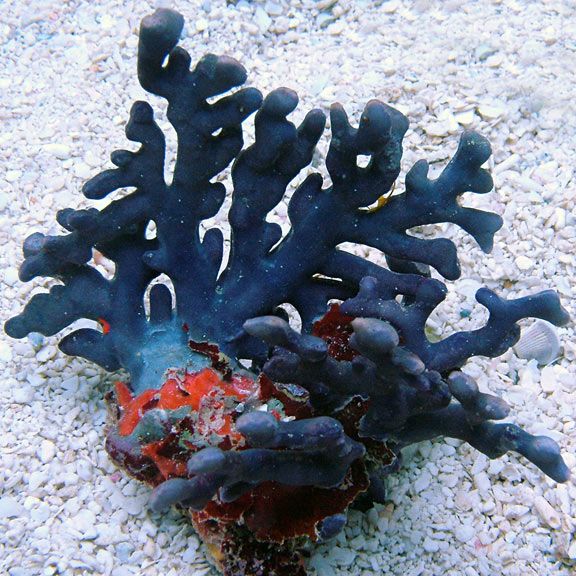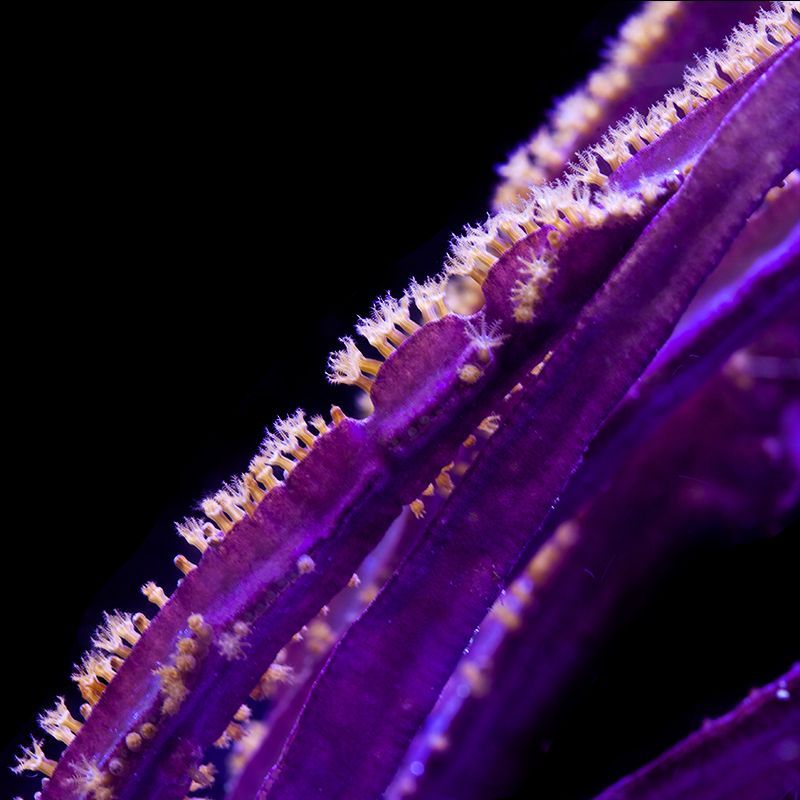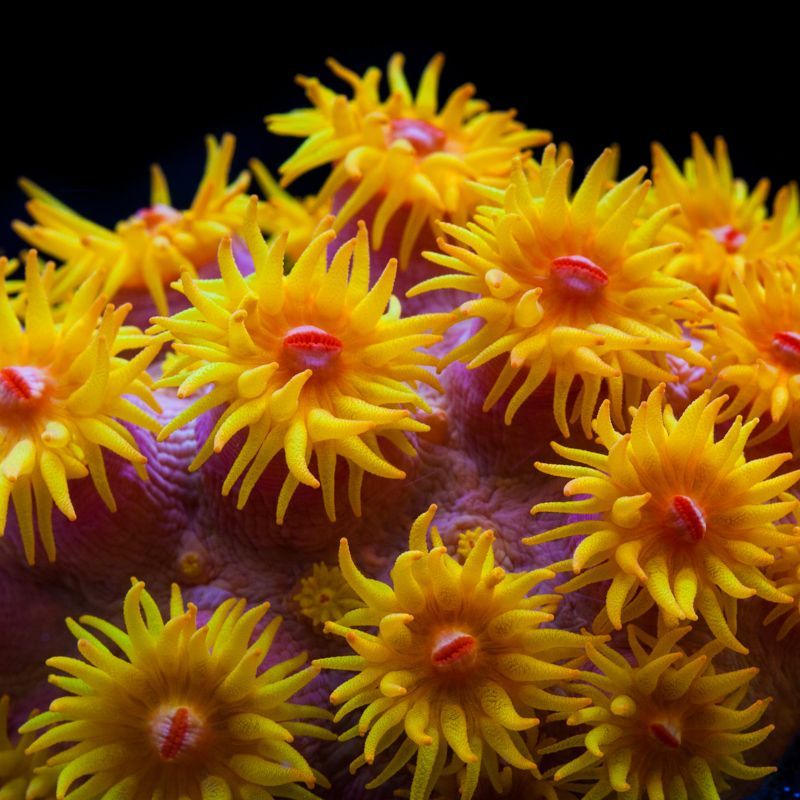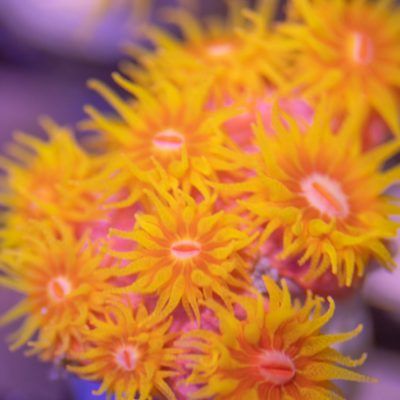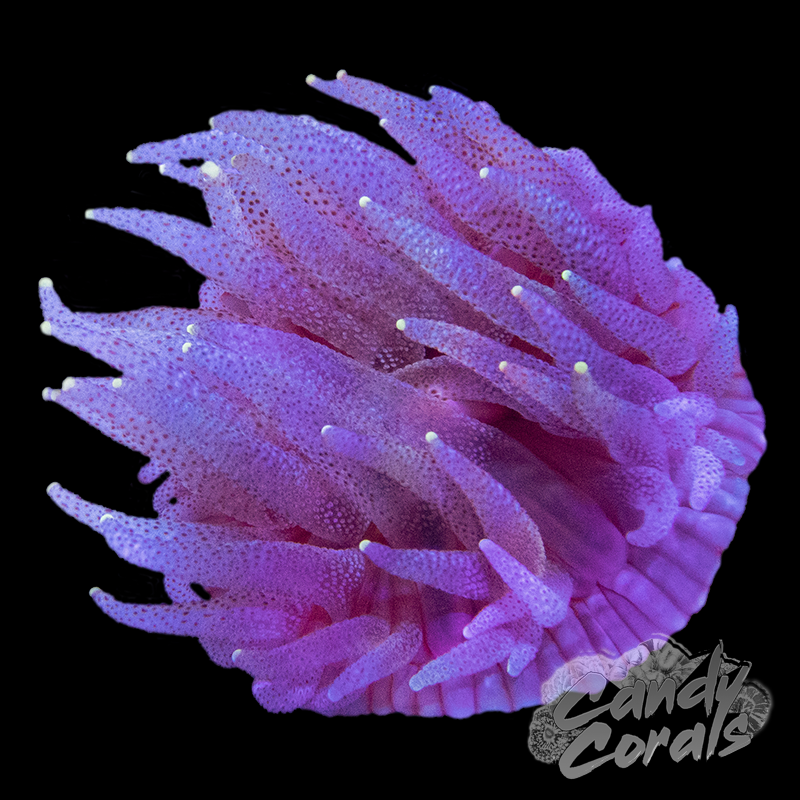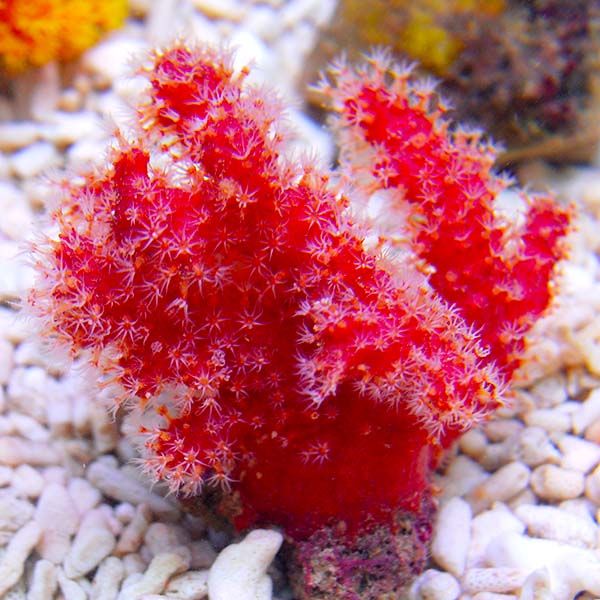If you are interested in finding more details about non-photosynthetic (NPS) corals, this comprehensive guide is for you.
You’ll find all the information you need to know before trying to add this demanding type of coral to your reef tank.
What are NPS corals?
NPS corals (non-photosynthetic corals) are some of the most amazing and unique corals you can have in a reef tank. They have the most exotic textures, shapes, and cryptic behaviors. One thing they have in common is that all NPS corals don’t have zooxanthellae, hence the other name azooxanthellate.
That means these corals don’t rely on the photosynthesis made by the algae living inside their tissue to get their food compared with the majority of corals. They have to hunt their food and physically eat prey in order to survive.
NPS corals require constant feeding in a reef tank while also maintaining good water quality, which can be problematic.
NPS coral types
Here is a list of some of the most common NPS coral types known in the hobby.
NPS coral care
NPS corals are hard to keep and therefore only suitable for experimented reefers.
While their light requirement is non-existent, they require constant feeding and a good water flow that will help them catch prey with their polyps. Since they eat a lot of food, that means the tank will also have a lot of organic waste that needs to be discarded with daily water changes and a very good filtering system.
Water parameters
These are the recommended water parameters for NPS corals.
- Temperature: 72º – 76º Fahrenheit (~ 22 – 24 ºCelsius)
- Salinity: 30-35 ppt or Specific Gravity 1.023 – 1.026 sg
- Nitrate: < 20 ppm – Can be toxic to livestock if too high
- PH: between 7.8 and 8.2
- Phosphate: < .10 ppm
- Calcium: 420-440 ppm
- Alkalinity: between 8 and 9.5 dKH
- Magnesium: 1260-1350 ppm
Acclimation
Before adding NPS corals to your tank, you should acclimate them from the bag of water.
This process is required to reduce the shock to the corals when changing environments. Advanced aquarists recommend the use of quarantine tanks for corals to make sure you don’t introduce pests into your display tank.
With acclimation, you give the corals the time to adapt to the new water parameters. The biggest problems are changes in pH, salinity, and water temperature.
You can do the acclimation in the bucket or bag they came in. Add half a cup of water every 30 minutes from your main tank into the recipient until the water doubles in size. Then gently remove the corals, let them drip all the excess water (this is important), and place them in the tank.
Don’t let the bag/bucket water enter your tank, it can cause death to your system.
You can also dip your corals before adding them to your tank if you want to remove any possible pests they might carry. This is done before acclimation.
Growth rate
The growth rate of NPS corals is dependent on species, water parameters, water flow, and food availability.
In the best conditions, an NPS coral colony can grow between 2-4 cm per year if they are soft corals, and between adding 5-25 mm per year if they are hardy ones.
Placement
Spacing
The distance between NPS corals depends on what type of soft coral you are introducing to the tank. 5-8 cm between them is a good start.
Flow requirements
NPS corals need as much water flow as SPS corals, as they rely on water movement to capture their prey. Not having a sufficient flow rate will starve NPS corals.
Therefore it is recommended a flow rate in the range of 40-60 gallons per hour (GPH). This number represents the number of times the water volume in the tank is moved during an hour. For example, a 200-gallon tank that has a GPH of 10,000 has a flow rate of 50x.
Lighting requirements
PAR
NPS corals don’t need light as they don’t have photosynthetic algae on their tissue. In nature, NPS corals are found in deeper, darker waters and at the bottom of caves. This might make you think you should run an NPS tank in the dark, however, that is not the case.
First of all, NPS corals are NOT affected by bright lights as some myths claim. They have no reaction to light whatsoever. But your reef tank still needs the lighting because copepods and other invertebrates depend on the light cycles for reproduction, and many NPS corals feed on these invertebrates.
Therefore keeping the invertebrates happy will also keep your NPS corals happy. Light will also help grow some algae, which is a food source for invertebrates.
You can make an NPS tank thrive at 50-150 PAR all over it, but you can go higher as well.
Light acclimation
Light acclimation is the process of helping your corals adapt to the light in your system. That is done by starting at 50% light intensity and increasing it by 5% every 3 days until you reach full power.
Or it can be done using the light acclimation mode found on modern lighting systems.
However, NPS corals don’t need high PAR anyway, therefore it is not necessary to do light acclimation.
Feeding
You want to feed your NPS corals a mixture of food with a range of particle sizes. You can feed them anything from phytoplankton to small rotifers, copepods, and shrimp. NPS corals with bigger polyps can eat larger prey.
How often do you feed NPS corals?
The NPS corals should be fed every day, sometimes multiple times per day if possible, as they rely exclusively on the food you give them.
Best time to feed NPS corals
Many NPS corals are closed during the day, but not for the reasons you think. They are not affected by sunlight (that’s a common misconception), they are closed because their food is more available during the night when invertebrates and other creatures start moving more freely. Since their food becomes available at night, they open when lights are out automatically.
If you feed them regularly during the day they start to open as soon as they sense food, even learning the schedule after a couple of weeks. Since invertebrates and other natural-occurring food are less present during the day, that is the time I’d recommend feeding the NPS corals.
NPS coral diseases
NPS corals are susceptible to diseases if the water parameters or food quantity are not adequate.
Two common elements for all coral diseases are stress from any external factors and/or changes in water parameters. The environmental factors include stress, injury from other organisms, presence of certain types of bacteria or fungus.
Some of the known diseases are shown below.
- Black-Band Disease
- Bacterial Bleaching
- Aspergillosis
- Dark Spots Disease
- Environmental Bleaching
NPS coral pests
Pests can really affect your NPS corals and even kill them if they have a chance. That’s why it’s important to know the most common pests and how to identify them.
Aiptasia Anemone
Anemones can multiply quickly and dominate a reef aquarium. They pose a threat to the tank because they sting fish and corals. Agitating Aiptasia can release eggs into the water column, spreading the infection. There are many treatments available that you can use to cover or inject this pest. There is also the option of using natural predators such as Copperband Butterfly Fish, Peppermint Shrimp, or Berghia Nudibranch.
Coral Eating Nudibranchs
They are the most difficult to see critters in your aquarium. They are very small and take the color of the coral they are eating. Reproduction is quick and they can decimate soft corals.
Treatment is more tricky since eggs are resistant to coral dips, which are effective on adults. But you should still dip new corals as a precaution.
Physically removing Coral Eating Nudibranchs might be the best option. If you dip infected corals frequently you can starve persistent infestations.
Bristle Worms
Bristle Worms are not a threat until the population is out of control or if they grow larger than 5”. Smaller worms can be helpful by consuming detritus, but larger specimens can attack coral, fish, and invertebrates.
The most effective way of getting rid of them is removing them. There are special Bristle Worm traps you can set, or sometimes you can grab them with a pair of tongs. Arrow Crabs, Dottyback, Wrasse, and Hawkfish are known to prey on them.
NPS coral bleaching
Coral bleaching happens when the tissue of the coral loses color or becomes translucent or white. The tissue itself remains attached to the corals, therefore it can be reversed.
Stress from the environment is the main cause of soft coral bleaching. Keep your tank parameters stable and within range to prevent bleaching.
Why are my NPS corals dying?
This is commonly called tissue necrosis, and it can be of two types based on speed. Rapid Tissue Necrosis (RTN) happens in 24 hours and Slow Tissue Necrosis (STN) can take days or even months.
Some of the most common reasons for tissue necrosis in soft corals are:
- Sudden change in alkalinity
- A drastic change in salinity
- Consistently low alkalinity levels
- Temperature swings, up or down
- Bacteria such as Philaster Guamense and Philaster Lucinda
STN is difficult to stop and RTN is almost impossible to stop. To minimize the damage make sure that temperature, alkalinity, salinity, and pH are within the optimal range. Test daily until resolution.
Cut off the impacted areas of the soft coral. To stop the spread of tissue necrosis, cut into the healthy flesh of the coral below and above the affected area.
NPS Spawning
Most corals are hermaphrodites, as they produce both female and male reproductive cells.
Spawning involves eggs and sperm being released into the water at the same time. In nature, this happens at the same time, once a year, depending on the moon phase. All corals in the colony release their eggs and sperm at the same time in a great spectacle.
However, spawning NPS corals in a home aquarium is a very rare sight. It rarely happens.
Are NPS corals hard to keep?
NPS corals are the hardest corals to keep in a reef tank, that’s why they are recommended for experienced reefers. They are incredibly dependent on food and water flow.
Why are NPS corals difficult?
NPS corals rely on getting the right amount and the right type of food from you, since they can’t use photosynthesis, and that means you have to feed them every single day.
You also need to have the right flow. If the flow is too weak, the food doesn’t get to the corals. If the flow is too strong, they can’t grab on it properly.
And all that food you add to water can easily make parameters go through the roof if they’re not controlled.
NPS corals for beginners
When you start out with NPS corals you might want to try the ones that are easier to keep.
Pick one of the following:
- Branching Sun Coral
- Fathead Dendros
- Rhizotrochus
- Branching Dendros
- Branching Tube Coral
- Black Sun Coral
- Balanophyllia
What is the easiest NPS coral to keep?
The Chili Coral is a soft NPS coral with bright red colors and one of the easiest to keep. They are hardier than other NPS corals, and they thrive in environments with strong water flow and plenty of food.
Are NPS corals aggressive?
It really depends on the species. Soft corals are more aggressive than LPS corals, while LPS corals are more aggressive than soft corals.
The NPS coral species should be evaluated to see if they go well with other corals.
Are NPS corals filter feeders?
Yes. NPS corals rely entirely on capturing and eating prey with their polyps. That makes them a filter feeder.
